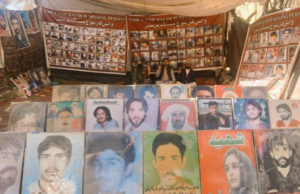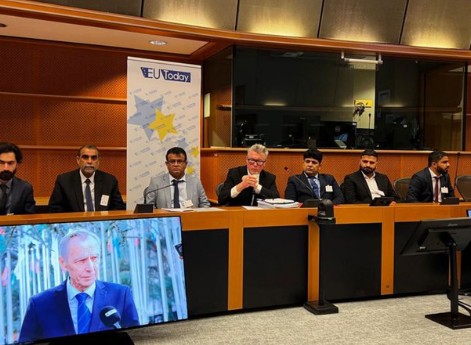
Pakistan has effectively created another enemy on its western border. Afghanistan, once a close ally of Pakistan, is gearing up to take on the Pakistan Army if it dared to intrude or fire at them on the Durand Line.
Afghanistan has two instruments of war against Pakistan–own Taliban army and the melange of terrorist groups which, not long ago, were working for the Pakistan Army. Both the groups are trained by the Pakistan Army and are armed with high-tech weapons left behind by the US-led forces which gave way to the Taliban in August 2021. The Afghan Taliban has its own allies, including China and Russia which are keen to work an arrangement with the former allies of Pakistan. The Americans too have a vested interest in Afghanistan and are keeping the powder dry by paying a hefty sum as ransom to the Taliban. Since August 2021, close to $2.9 billion of the US taxpayers money has been sent to Kabul.
These developments have put Pakistan on a backfoot. The Pakistan Army has declared a new military operation to tackle terrorism coming from its western borders but it has no public support in the tribal belt where the operation is to take place. The army has adequate air and artillery assets to take on the Taliban and TTP elements but the possibility of collateral damage restricts the scope of the kinetic operation, forcing the army to confine itself to Intelligence Based Operations (IBOs). These sporadic operations offer stop-gap outcomes, not adequate to contain the expanding influence of TTP and their patrons in Pakistan. These offensives also extract a heavy price in terms of casualties among the soldiers and police personnel.
Although the army has reportedly carried out over 22700 such operations in the past six months–approximately 3780 operations in a day, the result has been perfunctory. The gross failure of such operations is reflected in a recent report which pointed out that TTP has gained strength in nine districts of Khyber Pakhtunkhwa, an area dominated by the Pashtun tribal community.
The Pakistan Army’s problems in the region are manifold. The Pashtuns have long been suspicious of the Punjabi army’s disregard for Pashtun traditions and security. At the bidding of the US, after the 9/11 attack, Pakistan Army launched several military operations in the tribal belt, causing a major upheaval in the community. Millions were uprooted and forced to escape for safety and shelter to distant places inside Pakistan. Countless Pashtun homes and villages were flattened by artillery and air attacks, leaving a deep scar along the Durand Line. Young Pashtuns had risen up in mutinous revolt and for the first time, Pakistan Army, which Pashtuns had served with great loyalty, became the enemy. The army, in turn, pushed against the the rising Pashtun dissent with hardline tactics, similar to its approach against the Baloch, causing fissures within the tribal belt. The Pashtuns are now clearly against the army’s new operation, fearing a repeat of the earlier offensives in which they lost home and faith.
Another serious problem for the army is that many of its erstwhile allies among the terrorist groups which now form part of the Taliban regime are going to stand against them in case the conflict expands along the Durand Line. The Afghan Taliban have already warned of any escalations along the border. The Taliban is not averse to taking on the Pakistan army and it has considerable support from the people who have been deeply angry at Pakistan for deporting thousands of Afghans. Many of the deported Afghans have been born in Pakistan and considered Pakistan as their homeland. Scores of Afghans from the Pakistan Army have also been quietly sacked and deported. These incidents have caused immense anger among the Pashtuns in Afghanistan who have had a jaundiced view of Pakistan for decades. The anger has now turned to hatred which the Taliban is keen on exploiting to enlist a wider acceptance of their regime. For Pakistan, the strategic depth has fast transformed to strategic liability.
In addition, Pakistan suffers from lack of small arms to deal with terrorist groups like TTP which is now closely integrated with the Pashtun population along the Durand Line. The growing alliance between the Pashtun groups and Baloch militants in the recent past have made matters worse for the army which is under pressure from China to prevent attacks on their nationals. The Americans are keen to drag China into Pakistan’s conflict in Afghanistan but the Chinese are smart enough to keep pressure on the Baloch militants and not encourage any conflict with the Taliban in Afghanistan. Any military operation against Baloch will accelerate Baloch animosity against Pakistan rulers which could turn into the final phase of the Great Baloch War. To escape this predicament, Pakistan is igniting terrorism against India in Kashmir, in the hope of finding support from China, and even the US, flaring up violence on the eastern front, creating multiple fronts to deal with in the near future as economic and political meltdown speeds up.






